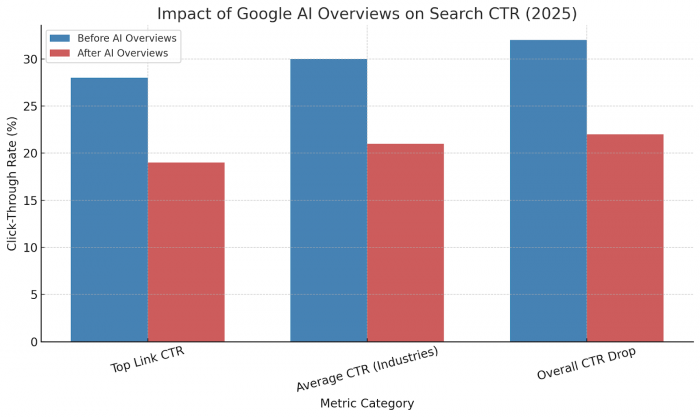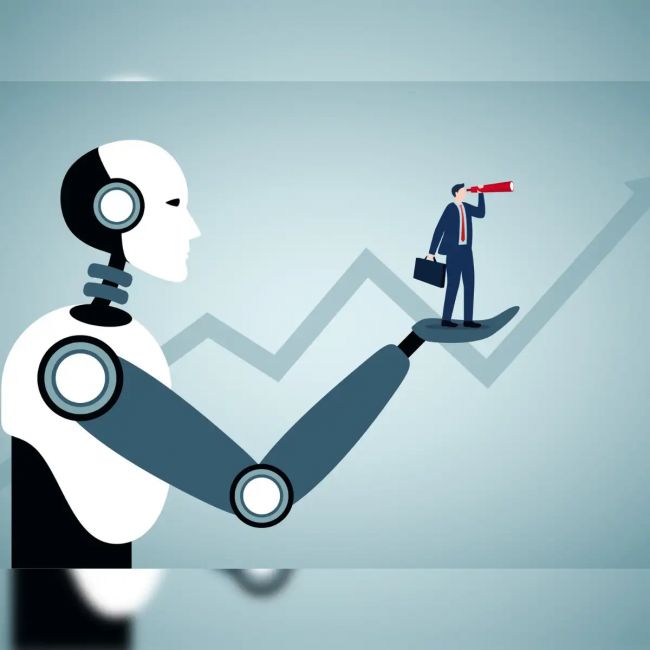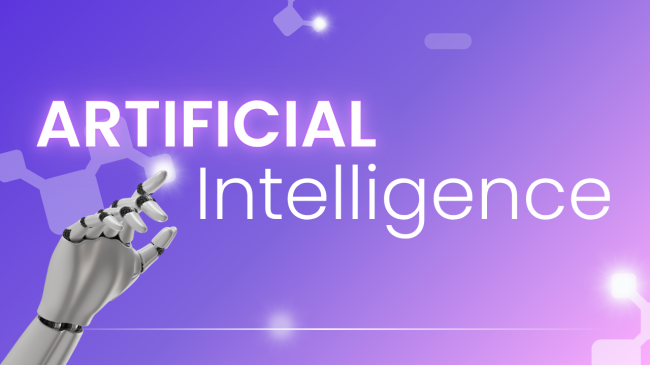On This Page
- AI Scores Gold in Natural Language Problem Solving
- Google’s Gemini “Deep Think”:
- OpenAI’s Experimental Model:
- Why This Breakthrough Matters
- The Unspoken Rivalry: OpenAI vs Google DeepMind
- Meanwhile, Google AI Overviews Are Eating Search Traffic
- New Traffic Patterns:
- Why It Matters:
- What Comes Next for OpenAI and Google?
- Final Thoughts: The Two Faces of AI Progress
In one of the boldest displays of AI reasoning ever recorded, both OpenAI and Google DeepMind have hit gold—literally—at the 2025 International Mathematical Olympiad (IMO). Their latest language-based AI models didn’t just solve high school-level math problems; they did it at a level matching the top 11% of human participants from around the globe.
But behind the headlines lies a deeper race. One that’s as much about proving dominance in symbolic reasoning as it is about reshaping how AI interacts with the human world.
AI Scores Gold in Natural Language Problem Solving
For decades, the IMO has been a proving ground for the world’s best teenage mathematicians. Problems demand not just correct answers but full proofs, constructed logically from first principles. In 2025, two AI systems entered the ring—not with symbolic logic, but natural language reasoning.
Google’s Gemini “Deep Think”:
- Tackled all 6 IMO questions entirely in natural English.
- Solved 5 out of 6 correctly in the same 4.5-hour limit given to human contestants.
- Submitted after human awards were announced, ensuring fair play.
- Reviewed and certified by IMO officials.
OpenAI’s Experimental Model:
- Also solved 5/6 problems—qualifying for a gold medal rank.
- Used a technique called “test-time compute”—evaluating multiple reasoning paths in parallel over time.
- Published results earlier, independently verified by former IMO medalists.
The bar for gold is high: in 2025, only 11% of 630 human contestants reached that score. For two AI models to achieve this simultaneously marks a watershed in multi-step symbolic reasoning using natural language.
“These models are learning to think more like humans—and in some ways, better,” said DeepMind’s William Jung in a post-competition statement.
Why This Breakthrough Matters
Unlike traditional AI benchmarks focused on recall or pattern matching, the IMO demands structured thought.
The AI must:
- Understand open-ended problem statements.
- Construct step-by-step solutions without shortcuts.
- Write out readable, logical justifications—like a human would.
This milestone suggests that foundation models are evolving into general-purpose reasoning engines capable of tackling real-world scientific problems, from theorem proving to hypothesis generation in physics.
The implications?
Far beyond test scores:
- AI as a collaborator in scientific discovery, not just an assistant.
- Potential acceleration in fields like formal mathematics, protein folding, and theoretical physics.
A new frontier in AI safety—how do you control a system that can independently form and justify conclusions?
The Unspoken Rivalry: OpenAI vs Google DeepMind
While both companies celebrated their AI’s IMO success, the tension was clear:
- OpenAI released its results first, sparking debate over timing and peer review.
- Google held its results back until IMO officials released human scores, earning credibility points for discretion.
- Each used different approaches—OpenAI’s high-compute model vs. Google’s fully natural language Gemini stack.
No direct winner was declared. But the contest highlights a growing AI arms race not just in capabilities—but in perception, ethics, and rollout strategy.
Meanwhile, Google AI Overviews Are Eating Search Traffic
Away from math battles, Google is also drawing attention for another AI milestone—one that’s reshaping the web’s economics.
In May 2024, Google launched AI Overviews in U.S. search results. These AI-generated summaries now appear above traditional links on many search queries. The impact? Nothing short of seismic.
The following chart highlights how click-through rates (CTR) have dropped across key metrics since the rollout:

New Traffic Patterns:
- Top link CTRs dropped 32–34% post-rollout, according to Amsive and Ahrefs.
- For high-volume, non-branded queries, organic traffic plummeted by up to 40%.
- Sites once dependent on “position #1” are now seeing fewer clicks, even when ranked at the top.
Why It Matters:
- Google is now answering questions directly—removing the need to click through.
- Publishers and content creators risk losing visibility and ad revenue.
- Google, meanwhile, captures more attention—feeding its own ad ecosystem.
If the IMO battle was about showcasing AI intelligence, the AI Overviews rollout shows its commercial power—shifting how people consume information and how websites fight to survive in search.
What Comes Next for OpenAI and Google?
Both companies are clear: these cutting-edge math-capable AIs are not public yet. OpenAI says it will take “months” to prepare the model for wider use, and Google has not committed to any release timeline.
Key open questions:
- Will these reasoning models become available via ChatGPT or Bard APIs?
- How will they be sandboxed to avoid hallucinations or misuse?
- Can they be trusted in educational, medical, or legal decision-making?
Expect 2026 to be a pivotal year where reasoning-grade AI becomes a battleground for enterprise use, academic partnerships, and public trust.
Final Thoughts: The Two Faces of AI Progress
This week’s news underscores a key theme in 2025’s AI trajectory:
- OpenAI and Google DeepMind are building AI that thinks like us—and sometimes better.
- Google is also deploying AI that reshapes how we get information—often without us even knowing.
One is about cognition. The other is about control. And both are reminders that the age of AI isn't coming. It’s already here—and rewriting everything from school exams to search engines.






Askar
Jul 22, 2025"Google AI Overviews Are Eating Search Traffic". Why is everyone picking Google AI Overviews for marginally clipping websites' traffic, but are completely OK with ChatGPT/Perplexity provided next to ZERO traffic when used for search?